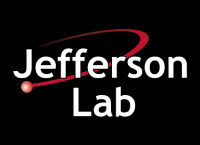The original Linac Coherent Light Source (LCLS) currently produces the world’s brightest X-ray pulses for research. When it came online in 2009, the machine enabled new areas of science, opening frontiers in imaging single nanoscale particles and in understanding chemistry on the natural timescales of reactions.
A new project, LCLS-II, has been launched that will increase the capabilities of the LCLS machine and meet the need for a high-repetition-rate/high-average-intensity source of coherent X-rays. Jefferson Lab is a key contributor to the project, which entails an upgrade of the LCLS machine at the SLAC National Accelerator Laboratory in Menlo Park, California. Begun in 2013 and funded by the U.S. Department of Energy (DOE), it is anticipated that the machine will turn on and emit its “first light” in 2020.
The LCLS-II project is being developed and built for SLAC by a multi-lab collaboration that includes four DOE national labs: Jefferson Lab, Argonne National Lab, Berkeley Lab and Fermilab, along with additional collaboration from Cornell University.
Transforming the LCLS with World-Leading Research Technologies
As early as 2013, Jefferson Lab began contributing to the success of the LCLS-II project. Jefferson Lab is a world leader in several of the technologies fundamental to the LCLS-II, including superconducting radiofrequency (SRF) technology and the liquid helium cryogenics plant technology that makes SRF possible.
The use of SRF technology in the LCLS-II will provide the capability to increase repetition rate by a factor of 1,000 and provide research scientists with an increased photon energy range. Jefferson Lab is providing the liquid helium cryogenics plant for the project and half (2 GeV) of the SRF cryomodules that will be installed in the first 700 meters of the LCLS complex at SLAC. Once completed, it will be the longest continuous SRF linac in the country, boasting 280 accelerating cavities.
Cryomodule Production
Expertise at Jefferson Lab will facilitate successful construction, installation and operation of SLAC’s first SRF-based linac. Jefferson Lab has a wealth of experience building SRF cryomodules. Some examples of cryomodules built at Jefferson Lab are found in the original and upgraded Continuous Electron Beam Accelerator Facility (CEBAF) and the Low Energy Recirculator Facility at Jefferson Lab, the Spallation Neutron Source at Oak Ridge National Lab and various developmental cryomodules used for injector applications.
The SRF Institute at Jefferson Lab and our partners at Fermilab are building the cryomodules that will be installed in the LCLS-II machine at SLAC. These cryomodules are largely based on an existing X-ray Free Electron Laser (XFEL) design that was built at Saclay and installed in the European XFEL at Deutsches Elektronen-Synchrotron (DESY) in Hamburg, Germany.
Cryogenics Plant
Over the last two decades, Jefferson Lab has developed a unique capability in the design and operation of large-scale cryogenic systems and has become an important resource for the US national laboratory complex. The Jefferson Lab cryogenics group has been instrumental in the design of many cryogenics plant construction projects, which include plants at SLAC (LCLS-II), Michigan State University, Facility for Rare Isotope Beams (FRIB), Oak Ridge National Lab (SNS), Jefferson Lab (12 GeV CEBAF Upgrade) and the National Aeronautics Space Administration (NASA). Additionally, Jefferson Lab had a fundamental role in improving the cryogenic efficiency of the existing cryogenics plant at Brookhaven National Laboratory.
For the LCLS-II project, two identical cryogenics plants will be used to supply liquid helium at a temperature of a few degrees above absolute zero to the SRF cryomodules that reside in the LCLS-II linac. The LCLS-II plants are based on the design used at Jefferson Lab for the 12 GeV CEBAF Upgrade and at Michigan State University for the FRIB project.
RF Controls and LLRF
As part of the collaboration, Jefferson Lab is responsible for the systems that will allow LCLS-II operators to control the components of the SRF cryomodules. The lab is leading the effort to design and produce the resonance controls and cryomodule interlocks for all 1.3 GHz cryomodules that will reside throughout the LCLS-II linac. Additionally, Jefferson Lab is providing technical guidance for cryomodule commissioning and operations.



